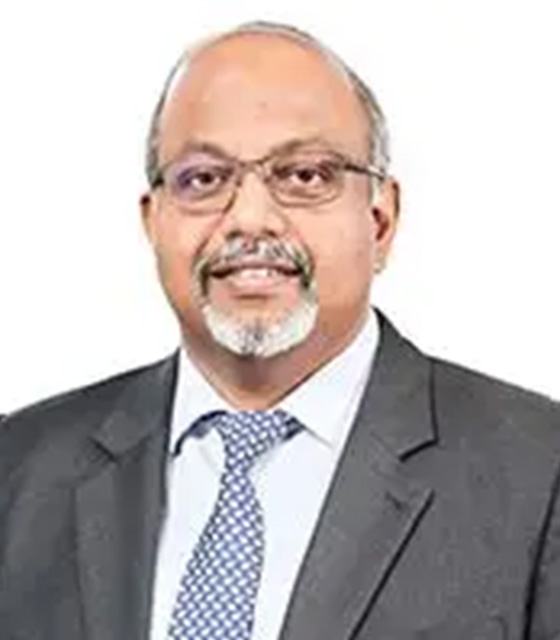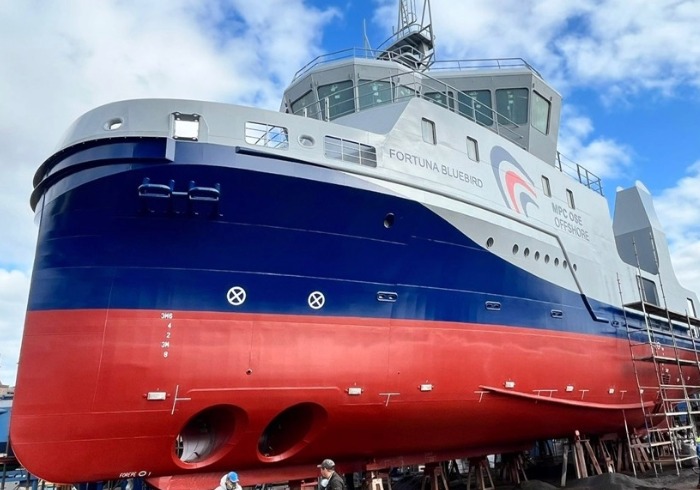Saudi Arabia’s Vision 2030, a strategic framework to push through economic and social reforms while making the kingdom less dependent on oil, looked promising at the start of 2020. In the time since, the country has been upended by the oil price war and Covid-19. Will this ambitious initiative boost trade in Saudi Arabia, or will it be a victim of circumstance? Maddy White reports.
Saudi Arabia had big self-made plans at the start of 2020. With its Vision 2030 initiative – a comprehensive programme to reduce Saudi Arabia’s dependence on oil, diversify its economy, and develop public service sectors – coming into focus, the country looked on track to make some drastic, and much-needed, changes. According to the Saudi Vision 2030 website, operated by the government, 2020 was the year to “drive outcomes” and “maintain momentum to continue reforms”.
However, in March, an oil pricing war between Saudi Arabia and Russia saw cheap oil flood the market, leading to a global oil glut and storage facilities filling up fast. At the same time, coronavirus triggered a sudden slash in demand as transport systems and logistics hubs ground to a halt.
The two oil giants have since reached a deal: the Organization of Petroleum Exporting Countries’ (OPEC) members – and other oil-producing nations – agreed to adjust their overall crude oil production downwards by 9.7 million barrels per day, starting on May 1, for an initial period of two months. But the recent events make it clear that Saudi Arabia remains crushingly reliant on oil as its chief money maker, despite Saudi Crown Prince Mohammed bin Salman’s attempts to wean the kingdom off oil by this year.
Covid-19 and the oil pricing war have led the International Monetary Fund (IMF) to forecast a 2.3% contraction of Saudi Arabia’s economy in 2020, reversing the mostly positive growth it had seen over the past few years. Additionally, to cover a budget shortfall caused by the oil price slump, the kingdom’s finance minister, Mohammed Al-Jadaan, said that it may borrow an additional SR100bn (US$27bn) in 2020, on top of the already announced SR120bn (US$32bn). Yet, Al-Jadaan has remained publicly upbeat about the future of the economy. “The kingdom went through similar crises in its history – maybe even worse – and was able to pass through them,” he said in a press conference in mid-April. “This is not an exception.”
How to trump oil
Saudi Arabia’s crown prince launched Saudi Vision 2030 in 2016, hailing it a “bold yet achievable blueprint for an ambitious nation”.
The vision comes as part of a flurry of similar initiatives in the Middle East, including UAE Vision 2021, Bahrain Vision 2030, Qatar Vision 2030 and Kuwait Vision 2035. In the UAE, Dubai has successfully taken steps to diversify its economy away from crude – a key objective in its vision – and grow its economy through trade, by exporting metals and food products, while also expanding tourism and property development.
Saudi Arabia possesses around 18% of the world’s proven petroleum reserves and ranks as the largest exporter of petroleum. The oil and gas sector accounts for about half of its GDP and 70% of export earnings.
In order to achieve the vision’s objectives, the country’s Council of Economic and Development Affairs (CEDA) has created 13 programmes that outline measurable delivery plans across sectors. One is a national industrial development and logistics programme, which focuses on developing four key sectors: industrials, mining, energy and logistics, as it bids to make the kingdom a global industrial powerhouse.
Other schemes include a financial sector development scheme, which looks to develop a diversified and effective financial sector to support the economy, diversify its sources of income and encourage investment, and a fiscal balance plan that aims to maximise oil and non-oil government revenues while improving spending efficiency and risk management.
Nevertheless, analysts warn that oil will always trump the rest of the economy in the country. “The problem for Saudi Arabia is how to do anything that can compete with oil,” says Laura James, senior analyst for the Middle East at Oxford Analytica. She tells GTR that there is room to expand petrochemicals and that the initiative’s economic policies could make some progress in that field, but “fundamentally, trade in Saudi Arabia is going to be about oil; the numbers are just massively predominating”.
No vision, she says, will change that. “Visions themselves tend to be inflated and unrealistic. In Saudi Arabia, it is reflecting genuine major policy changes which have to happen.”
Nevertheless, James concedes that “some steps” have been taken. Several social and economic reforms have been pushed through in the past few years. As an example, in June 2018, the kingdom ended a ban on women driving cars.
The World Bank has recognised Saudi’s reforms in its economic update for the country, published in April, which says: “The kingdom continued delivering on its Vision 2030 commitments and measures in several areas: financial sector development, human capital strengthening, public financial management, energy sector diversification, and many others.”
It adds that the most notable reforms in the past year have been in the business environment. “The completion of Saudi Aramco’s initial public offering (IPO) in December 2019 reflects the government’s drive to leverage oil wealth to finance diversification, transforming the Public Investment Fund (PIF) into an activist sovereign wealth fund,” it says.
Trade finance tools
As part of the kingdom’s grand plans, Saudi Arabia has launched its own export credit agency (ECA), the Saudi Export-Import Bank (Saudi Exim). The bank’s mandate is to help the country diversify its economy, while supporting and financing the export activities of Saudi businesses.
Having had regulatory approval granted in February 2020 by the Saudi government, the bank has now become operational, with its executive committee approving seven loans worth SR310mn (US$82mn) in April, in addition to rescheduling three loans valued at SR216mn (US$57mn), according to the Saudi Gazette. It is not yet clear which sectors these loans are to.
In a statement, minister of industry and mineral resources and chairman of Saudi Exim Bandar Alkhorayef said: “Efforts are underway to activate the bank’s role in supporting export activities of the private sector. The bank is currently in the preparation phase of its initial launch, through attracting competent professionals and forging partnerships with local and international financial and insurance firms.”
Sean Bowey, head of global trade and receivables finance products at SABB, told GTR at GTR Mena in early 2020 that launching an ECA is a natural next step for the kingdom.
“It’s part of an overall strategy. All the individual initiatives weave together. A lot of thought has gone into how all of these things fit together and so it doesn’t surprise me because the government has considered the many different facets for the development of trade and the broader society,” he says.
Saudi Exim follows in the footsteps of neighbouring UAE’s Etihad Credit Insurance (ECI), set up in 2018 with a short-term goal of supporting US$3bn-worth of non-oil exports and re-exports as part of the country’s UAE Vision 2021 agenda.
While Saudi Arabia continues to be a focus of criticism for its lack of corporate transparency generally, Bowey said that the vision is enabling a more open kingdom in terms of trade finance.
“It is getting much more so [transparent] across trade finance. With the government introducing an e-platform for guarantees, an electronic marketplace for receivables for government contracts, and a digital marketplace for payables – all of which are visible online and backed by changes in the legal process – it makes things more transparent and provides more opportunities for banks to finance with confidence, in turn injecting liquidity in sectors where it is needed most, such as SMEs.”
Tabadul is one Saudi company currently providing technology services that are focused on the digital transformation of the kingdom’s trade. It serves government and private sector organisations, and is run by the PIF.
GTR understands that Tabadul is leading projects to digitise trade transactions and encourage paperless trade in the kingdom. Saudi Arabia’s e-LG (letter of guarantee) project is being driven by the service provider under guidance from the Saudi Arabian Monetary Authority (SAMA), with its primary objective to develop a comprehensive national system for exchanging guarantee-related data, accessible by all stakeholders in transactions that require a guarantee.
Elsewhere, Fasah, launched by Tabadul, is a platform seeking to reform the logistics process, enabling information exchange between all parties involved in import and export procedures.
Fasah Pay, a new service within the Fasah platform, enables business-to-business (B2B) customers to digitise the invoice and payments process. It aims to “accelerate financial trade facilitation for stakeholders such as importers, custom brokers, port contractors, shipping agents”, the company says.
Bowey added that digital infrastructure upgrades for trade are now matching with physical infrastructure upgrades, making it easier for lenders to provide capital and for foreign companies to be involved in Saudi mega-projects. Bowey said efforts to improve transparency are having a “real tangible effect”.
Mega-projects prompt budget worries
Alongside its policy reforms, Saudi Arabia is progressing with several mega-projects in its drive to develop a well-rounded economy and provide jobs outside of its oil industry.
Its futuristic city Neom, located in the north-west of the country, near the Red Sea, is one of them. Neom is backed by more than US$500bn by the PIF, as well as local and international investors. The government estimates that its contribution to the kingdom’s GDP is projected to reach US$100bn by 2030.
Meanwhile, Saudi Arabia’s Red Sea mega-project, a land and property development covering more than 90 islands and miles of desert, is another stab at the kingdom becoming less dependent on its natural resources.
Wholly owned by the PIF, the Red Sea Development Company was established in 2018 to lead development of the Red Sea project. It is hoped the project will bring tourists to Saudi Arabia, and follows the kingdom offering foreign tourist visas to non-religious visitors as of September 2019.
However, these ambitious projects could be put on hold. Saudi Arabia’s finance minister Al-Jadaan has said that the kingdom will need to review its spending due to the economic impact of Covid-19.
Saudi Arabia placed its capital Riyadh and other major cities under a 24-hour lockdown in early April. By the end of the month, restrictions had started to ease. As of May 6, the kingdom reported 31,938 cases of Covid-19.
“We must reduce budget expenditures,” he said in an interview with Al Arabiya TV in May. “It is very important to take strict and extreme measures, which may be painful, but are necessary for public financial stability,” he added. Slowing down mega-projects to reduce spending is one measure the kingdom could take, he noted.
Meanwhile, the World Bank revealed in its country economic update that the kingdom’s 2020 outlook is “very weak” in the wake of Covid-19 and oil price volatility.
“Large capital investments and mega-projects are envisaged under Vision 2030, generating significant financing needs and fiscal risks, with potential crowding out of private-sector-led growth,” it says.
With medium-term fiscal balances estimated to continue in deficit, Vision 2030 targets are most certainly at risk.







